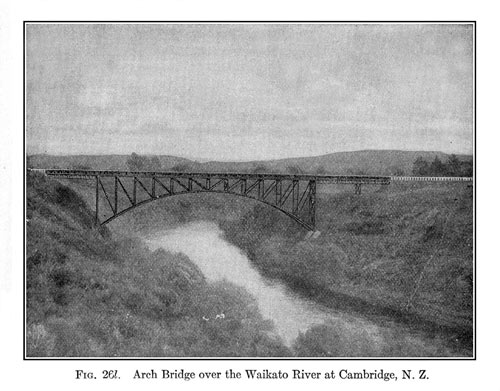| ECONOMICS OF STEEL ARCH-BRIDGES | 247 |
|
often of great importance when the rock would be subject to slip under vertical loading. A good illustration of such a condition is the author's Fraser River Bridge at Lytton, British Columbia, shown in Fig. 26j. Second. Where there is a navigable stream to be crossed by a single span, and where the material near the water's edge is either rock or some fairly-hard material, such as shale or stiff clay, a deck truss-bridge would be inadmissible on account of navigation, and a through truss-bridge would involve high, expensive piers; hence, under these circumstances, an arch structure would be economic. Two of the author's bridges over the Waikato River in New Zealand, shown in Figs. 26k and 26l, illustrate such conditions.
Third. Where the foundations of a wide crossing are either solid rock or some other hard material lying close to the bed of the stream or to the surface of the banks thereof, and where the grade line is much above the high-water line, a layout consisting of a succession of arch spans will frequently be economic. The springings of the arches can be brought down close to the high-water line or to the ground, as the case may be, giving small piers; whereas, for a deck simple-truss layout, much higher piers would be required. An excellent illustration of such conditions is given by the author's highway bridge over the Arroyo Seco at Pasadena, Calif., shown in Fig. 26m. |
